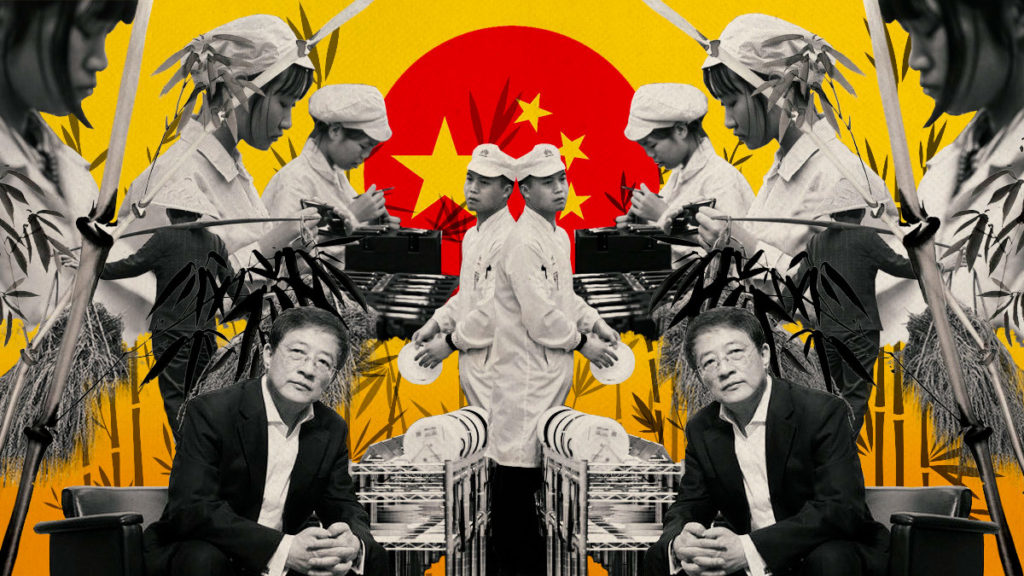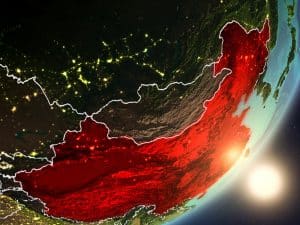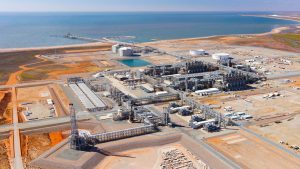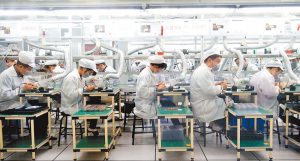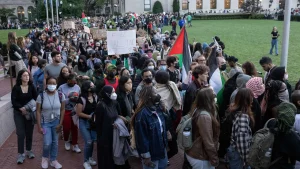How should we analyze the economic and social transformations in China four decades after the reforms initiated by Deng Xiaoping?1Translator’s note: Deng (1904–97) was China’s de facto leader (what the Chinese typically refer to as “paramount leader”) from 1978 to 1989, despite never holding office as head of state or government nor being the general secretary of the Chinese Communist Party. He is often referred to as the “architect of modern China.” Forty years ago, China’s economy grew at an annual average rate of 9.5 percent, when the world average was below 3 percent. As a result of that expansion, its gross domestic product (GDP) increased fivefold in the period since, which explains why it is now the world’s second-largest economy. It is the world’s main industrial producer and exporter, and it is the most important place to which almost all other countries export their products. This is some of what has happened since 1978, when Deng began the path of reforms aimed at capitalist restoration. China is still officially defined as a “socialist market economy.” But is that just a euphemism to avoid talking about capitalism?
Primitive Accumulation “with Chinese Characteristics”
As I wrote recently, it is nearly impossible to think that a “Chinese miracle” could have taken place without the 1949 revolution, which achieved national unity, led to a break with imperialism (until the restoration of diplomatic relations initiated by Mao in the early 1970s), liquidated large agricultural landowners, and aimed at strengthening a nationalized industry. None of this had been possible for the nationalist Kuomintang or any other sector of the bourgeoisie; it was achieved by the revolution.2The Kuomintang (KMT) is the Chinese nationalist party of the Republic of China founded after the Xinhai revolution of 1911. In 1923, following the tactics of the Anti-Imperialist United Front, which the Third International had defined in 1922 in the “Theses on the Eastern Question,” the Chinese Communist Party (CCP) members entered the ranks of the KMT, joining forces to fight the imperialist occupation. It was the KMT that ended up suppressing the insurrections in Shanghai and Canton in 1927 — with Stalin, who had already consolidated his leadership of the USSR through the county’s ongoing bureaucratization, ordering the CCP to obey the KMT leadership. This all fell under the conception that in this “first stage” of the revolution, the working class was not called on to lead. In 1934, the KMT openly resumed its efforts to exterminate the Communists by accelerating a final break. After the revolution, the KMT fled to Taiwan, where it maintained dominance with the support of imperialism.
As Ho-fung Hung argues, the Communist Party was able to “extract and concentrate scattered rural surplus” and direct it toward urban industrial growth, thanks to “rural collectivization” and “price scissors” (meaning that state-owned industry paid the peasants less and charged them more for its products). This led to high growth rates “until the mid-1970s, when the growth momentum generated by the central-planning system was exhausted and the economy came to a standstill.”3Ho-fung Hung, The China Boom: Why China Will Not Rule the World (New York: Columbia University Press, 2016), 54.
This “primitive accumulation” has been a key input for capitalist restoration because, as happened in Soviet Russia and eastern Europe, some state property has been taken over by state bureaucrats in a bid to become “entrepreneurs.” This left “a vast pool of healthy and educated surplus laborers in the countryside.”4Ibid. It can thus be argued that “the current boom in China is built on the industrial foundations established in the Mao period.”5Ibid., 52.
From the beginning all the revolution’s progressive legacies crystallized into a “truncated” transition to socialism because the Chinese Communist Party (CCP) bureaucracy played such a powerful role in shaping it, while the working class played a diluted one.6Emilio Albamonte and Matías Maiello point out that “it was not the working class with its own revolutionary party that carried out the bourgeois democratic tasks and linked them to its own program, but rather a peasant-based communist party ended up clinging to part of the program of the proletariat. The consequence was that “a ‘permanent’ dynamic (internationally and nationally) towards communism did not develop after the seizure of power, but this perspective was blocked from the beginning.” Estrategia socialista y arte militar (Buenos Aires: CEIP, 2017), 394. These legacies were the preconditions for initiating, from Deng onward, a path of social regression hand in hand with capitalist restoration.
At the same time, as Juan Chingo argues, “In the context of the historical setback represented by the capitalist restoration, the Chinese economy has benefited — contradictorily — from the ‘advantages of backwardness.’”7Juan Chingo, “Mitos y realidades de la China actual” (Myths and realities of today’s China), Estrategia Internacional, no. 21 (September 2004). One of the main reasons why the effects of capitalist restoration in China contrast with the ravages of the USSR and eastern Europe is that the starting points could not be more different. As Fan Gang points out, the economies of the latter “were highly industrialized and highly nationalized when the reforms began,” and “more than 90 percent of the population were workers in state-owned enterprises.”8Quoted in ibid. In China, by contrast, 80 percent of the population was working in agriculture in 1978:
It was basically an agricultural society at that time, with a gross domestic product per capita of only 100 U.S. dollars. … As long as China was not a highly industrialized or nationalized economy, it was much easier to proceed with reforms and provide growth in income and in the economy as a whole, to restructure while it was developing.9Ibid.
This did not make the introduction of capitalist social relations any less violent for the hundreds of millions of peasants thrown into the dormitory factories and permanent migration, or for the environment, as most industrialized Chinese cities became leaders in pollution. But unlike what happened in the USSR and eastern Europe, where integration into capitalism represented a fall into the abyss for the entire working class, in China the effects would be different for the “old” and “new” workforce, the latter being able to hold on to “their current situation initially” as “a relative improvement over their living conditions in the backward Chinese countryside.”10Ibid.
The path to capitalist restoration in China proceeded in four phases:
- The decollectivization of agriculture, the first of Deng’s reforms. “In 1982, People’s Communes (the Chinese form of collective agriculture) were officially dismantled. On paper, the rural land remained under collective ownership by village communities. In fact, land was distributed to individual households, who had full control over the use of land.”11Minqui Li, China and the Twenty-First Century Crisis (New York: Pluto Press, 2016), 25. Initially, this right of use did not allow one to transfer ownership. During the first decade of reforms, “the driving force of growth [was] private enterprises and rural collective enterprises, many of which were private ones in disguise.”12Hung, China Boom, 61. There also began the incipient joint ventures between state enterprises and foreign firms in an effort to obtain technology. The stimulus to the rural private sector led to economic growth, but at the same time it led to a strong deficit in the external accounts (balance of payments) because there was an increase in imports (of means of production and consumer goods) but not in exports.13Li, China and the Twenty-First Century Crisis, 25 At the end of the 1980s, under the auspices of Deng and Zhao Ziyan — then the CCP general secretary — there began an economic reform with a clearly neoliberal orientation, under which all price controls were quickly eliminated. This increased inflation, which reached 21 percent in 1988. “Surging inflation and growing corruption hurt not only the urban working class, but also intellectuals and college students. The rapid escalation of social discontent led to the political crisis in 1989.”14Ibid., 27.
- The Tiananmen massacre, which took place the same year as the collapse of the USSR and the former eastern European states. This was a turning point that would eventually accelerate the restoration. As Chingo points out, “The fear generated by the Tiananmen Square uprisings tipped the balance towards a conservative orientation in politics while economic liberalization was deepening.”15Chingo, “Mitos y realidades.” After some years of impasse during which the internal balance in the CCP tipped in favor of the sectors most reluctant to accelerate pro-market reforms (whose difference “was more about the pace and extent of the market-oriented reform than about its necessity within the ‘birdcage’ of state socialism”16Jianyong Yue, China’s Rise in the Age of Globalization: Myth or Reality? (London: Palgrave Macmillan, 2018), 171. or “socialism with Chinese characteristics,” a formula that became an umbrella under which all capitalist restoration policies were introduced), it was revitalized again in 1992, but its center was located on another terrain. The sectors most reluctant to continue along the path of openness “negotiated with Deng Xiaoping, who insisted on the continuity of the reforms. … As time went by, there were no more sectors that opposed the reforms in the power structures.”17Chingo, “Mitos y realidades.” According to Hung, “Entrepreneurial capitalism was then followed by state-led capitalism in the 1990s and beyond, when large, urban-centered SOEs [state-owned enterprises] displaced and subjugated the private sector.”18Hung, China Boom, 61. The SOEs were heavily restructured to adapt to the economic performance criteria of capitalist firms, which the American investment banks were called on to evaluate, to such an extent that financiers Carl Walter and Fraser Howie could claim in 2011 that “Goldman Sachs and Morgan Stanley made China’s state-owned corporate sector what it is today.”19Carl E. Walter and Fraser J. T. Howie, Red Capitalism: The Fragile Financial Foundation of China’s Extraordinary Rise (New York: Wiley, 2012), 10. The corporate sector was reconfigured mainly in the decade from 1993 to 2003. Since 1995, under the motto “hold on to the big, let go of the small,” efforts were concentrated on developing national “champions,” the largest firms, which were given abundant financial assistance, markets with limited competition, and other advantages, while the privatization of smaller SOEs advanced. As Li notes, “When the Communist Party elites decided to undertake massive privatization in the 1990s, the urban working class found itself politically isolated. Because of the presence of a large and rapidly growing capitalist economic sector, the state sector working class was left with little economic bargaining power. The class war of the 1990s ended with the victory of the new Chinese capitalist class.”20Li, China and the Twenty-First Century Crisis, 30.
- The deployment since 1992 of export-oriented industrialization (EOI). Developed almost entirely by foreign private capital, this strategy was used to open the economy and allow foreign investment. With its gigantic availability of labor power, which transnational capital could put to use by paying low wages, China played a central role in so-called productive internationalization, in which many industries were relocated from the imperialist countries to the dependent economies and production was subdivided into several partial processes taking place in different countries.21On this internationalization of production and the role of China, see Juan Chingo, “Crisis y contradicciones del ‘capitalismo del siglo XXI” (Crisis and contradictions of 21st-century capitalism), Estrategia Internacional, no. 24 (December 2007–January 2008); Esteban Mercatante, “Las venas abiertas del Sur global” (The open veins of the Global South), Ideas de Izquierda, no. 28 (May 8, 2016); Estaban Mercatante, “Una carrera hacia el abismo” (A race to the bottom), Ideas de Izquierda, no. 30 (July 2, 2016). China has become the center of world industrial production by far. China’s entry into the World Trade Organization (WTO) — for which it made “commitments … broader actually than any WTO member has made,” as Ambassador Charlene Barshefsky, the American negotiator involved in the agreement, stated at the time,22U.S. Senate, Committee on Finance, One Hundred Sixth Congress, “China’s Application for Accession to the World Trade Organization,” Hearing, April 13, 1999. — was a turning point in attracting foreign investment and expanding exports. In 1990 China exported only 1.17 percent of internationally traded manufactures; 20 years later, it was the leading exporter. In 2018 it exported 14 percent of all manufactured goods, followed by Germany (9.26 percent), the United States (8.63 percent), Japan (4.67 percent), and France (4.04 percent). Initially, the investments the country attracted were exclusively aimed at developing the “labor-intensive” links of the global value chains, but as I pointed out in an earlier article, the state concentrated its efforts on raising the technological content of its exports, not only by supporting national firms but also by betting on foreign firms to partner with national ones and transfer technology and establish more complex production links. China became the world’s “great seller” and the United States its great buyer, giving rise to “global imbalances,” in which the great imperialist power has become chronically dependent on financing from China. This remains the case even though bilateral relations have lately been marked by confrontation.
- The slowdown of China’s export-led growth in the aftermath of the 2008 economic crisis. Although world trade fell sharply during the Great Recession, it partially recovered, but it was much slower. In previous decades world trade, along with investments, had been increasing more than world output. But now it grew less than the economy almost systematically, and this has been exacerbated in recent years by trade disputes. China kept its economy from collapsing as a result of the global downturn in 2008, but since then one of the engines of its growth has weakened: exports. It maintains its export leadership, but foreign sales no longer propel the economy as they once did. As a result of the crisis, the question arose whether China’s economy needed a “rebalancing” so that it would depend less on exports and more on producing for domestic demand, not only for investment (which was already high and increased to 50 percent of GDP) but also for consumption. But such a rebalancing did not happen, because although wages increased, they could not absorb enough of the country’s output. Rebalancing was thus prevented because both the multinational capitalist exporters and the Chinese bourgeoisie resisted sacrificing China’s competitive advantage in the international market: its comparatively low wages. Domestic demand was stimulated by accelerating investments, creating monumental infrastructure works and large-scale real estate development, which fueled bubbles that began to appear in 2015 (before which the government had tried to contain them by taking advantage of the nationalized financial system). They also further fed the development of SOEs. Finally, as a result of the imbalances produced by the crisis, China entered into an increasingly aggressive competition to penetrate new countries commercially and to direct investments in ambitious infrastructure projects outside its territory, such as the Belt and Road Initiative.23Translator’s note: The Belt and Road Initiative is a global infrastructure development initiative undertaken by the Chinese government beginning in 2013. It aims to invest in nearly 70 countries and international organizations with infrastructure projects to aimed at creating a large, unified market both internationally and domestically.
What Shapes the Economy? Private Capital or State-Owned Enterprises?
How should we define China economically and socially based on what has emerged from these transformations over four decades? Although China has developed capitalist sectors, some analysts maintain that China cannot yet be called capitalist. Let’s not forget that China awakened in the historian Giovanni Arrighi a fantastical, speculative hypothesis about the development of a noncapitalist market that would be projected from there to the rest of the planet.24Giovanni Arrighi, Adam Smith in Beijing (London: Verso, 2007). Since the publication of Arrighi’s thesis in 2007, a lot has changed in China. But even today, Marxists such as Michael Roberts reject the idea that China is capitalist; for Roberts, the law of value operates on the Chinese economy, but its “impact is ‘distorted,’ ‘curbed’ and blocked by bureaucratic ‘interference’ from the state and the party structure to the point that it cannot yet fully dominate and direct the trajectory of the Chinese economy.”25Roberts, “China: Three Models of Development,” Blogging from a Marxist Economist, July 2015. The author relies on this to argue that it is not a capitalist economy. He acknowledges that “there has been a significant expansion of privately owned companies, both foreign and domestic, over the last 30 years, with the establishment of a stock market and other financial institutions.”
But the vast majority of employment and investment is undertaken by publicly owned companies or by institutions that are under the direction and control of the Communist party. The biggest part of China’s world-beating industry is not foreign-owned multinationals, but Chinese state owned enterprises. The major banks are state-owned and their lending and deposit policies are directed by the government …There is no free flow of foreign capital into and out of China. Capital controls are imposed and enforced and the currency’s value is manipulated to set economic targets. 26Ibid.
David S. G. Goodman falls largely in line with Roberts. He characterizes China as “a mixed economic system in which a growing market sector interacts and hybridizes with, but largely remains subordinated to, a more established state sector.”27David S. G. Goodman, Class in Contemporary China (Cambridge: Polity, 2014), 29.
These approaches are based on the fact that the weight of SOEs in the economy is certain. If we look at how assets are distributed today according to the type of firm, what we will see is that SOEs continue to be the corporate sector that manages the most resources, by far. In the industrial sector, SOEs have two-thirds of total assets, while privately owned industrial firms have one-third, according to the latest data from China’s National Bureau of Statistics. If we look at the Chinese firms that made it onto the latest Fortune Global 500 list of the planet’s 500 largest companies — a list on which China now has more companies than any other country — we see that the overwhelming majority are state-owned, either totally or partially. In many cases, these firms have limited global reach, operating primarily within China itself, but they achieve their rankings by virtue of the scale that the Chinese market allows.
It is also public companies, not private ones, that lead China’s foreign investment abroad. In other words, most of the productive capital disbursements made by China in other countries are by SOEs. China’s foreign direct investment outflows ranked fourth in the world in 2019; it accounted for 8.9 percent globally, after Japan (17 percent), the United States (9.5), and the Netherlands (9.4 percent). In 2010, 90 percent of China’s foreign investment was made by SOEs, and now the proportion has fallen to 60 percent (along with a formidable increase in the country’s total investment abroad in the 2010s). That means more Chinese private firms are investing abroad.
It should be noted, however, that the distinction between publicly and privately owned companies is rather blurry. As Lee Jones notes, “Many limited liability companies (LLCs), which comprise 43.2 percent of COFDI [Chinese outward foreign direct investment], involve a mixture of private and public shareholders, with SOEs sometimes enjoying controlling stakes. SOEs own an estimated quarter of private firms, including subsidiaries listed on foreign stock markets; likewise, many SOEs have private shareholders.”28Lee Jones, “Beyond ‘China, Inc.’ — Understanding Chinese Companies,” alainet.org, July 13, 2020.
The picture of the overwhelming majority of state-owned corporations changes when we look at the export sector. SOEs now account for 10 percent of the country’s total exports, whereas in 1995 they accounted for 67 percent of sales abroad. Today, 90 percent of exports are shared equally between firms wholly or partly owned by foreign capital and Chinese private equity firms. Foreign firms (mostly from the imperialist countries that continue to exploit China’s cheap labor force) had the largest share of China’s exports in 2006, reaching almost 60 percent. As far as Chinese private capital firms are concerned, their share of exports was almost nonexistent in 2000 and barely 10 percent in 2004. Although they have increased their share, “most of these exports by [privately owned enterprises] remain in low-value sectors, such as clothing and cheap consumer goods.”29Sean Kenji Starrs, “Can China Unmake the American Making of Global Capitalism?,” in Socialist Register 2019: A World Turned Upside Down?, ed. Greg Albo and Leo Panitch (London: Merlin Press, 2019), 166.
China’s most complex exports are classified as “processed with imported materials”; they are the “most dynamic and technologically advanced” and “are at the heart of China’s integration into the global value chains of the world’s top TNCs [transnational companies].”30Ibid. In the case of these exports, the companies with foreign capital participation have consistently varied between 80 and 85 percent since 2006. This is an area that accounted for one third of exports in 2017. Most of these exports are made by exclusively foreign capital companies (60 to 65 percent), while a part of this total is made up of joint ventures between Chinese and foreign capital. SOEs export less than 5 percent in this area, and private firms export the remaining 10 percent. “The dominance of foreign capital in China’s most technologically advanced exports is staggering, especially when considering that most observers continue to assume that Chinese exports are exported by Chinese firms.”31Ibid., 167.
Korean firms such as Samsung and LG do their own assembly in China and are among the county’s top-10 exporters. Multinational firms such as Apple operate in China through outsourcing. In 2015, of the top-10 exporting firms, only two were of Chinese origin. The country’s leading exporter that year was Hon Hai Precision Industry (Foxconn), a Taiwanese company that makes half its turnover assembling phones for Apple. Five other Taiwanese companies were also among the top-10 exporters in China in 2015, and together with Foxconn they accounted for 71 percent of the total exports from the top 10 and 11 percent of the country’s total sales. The only two Chinese firms among the top 10 exporters were Huawei and the oil company Sinopec.32Ibid.
In short, private (and mostly foreign) capital continues to dominate foreign trade, while SOEs are predominant in the economy as a whole (in which foreign trade has lost some relevance in recent years because the economy has grown more than exports).
To what extent can it be said that SOEs have thus far managed to escape the constraints of the law of value? They have been able to do so to the extent that they have consistently managed to maintain lower levels of profitability than private capital without that preventing them from taking on large-scale debt to sustain ambitious expansion plans. If we look at the ratio of profits to assets in state-owned industrial holdings, it is half that of the private sector in the economy. China’s corporate sector is thus not entirely subject to the pressures of profitability, yet it has continued to grow and invest. This is thanks to the Chinese financial sector — one of the world’s least deregulated and most open to private capital — which has provided the financial resources to sustain corporate growth. Of China’s total accumulated debt, which, counting the public and private sectors, reached 317 percent of GDP in the first quarter of 2020, half (150 percent of GDP) is in the hands of the nonfinancial corporate sector, which quadrupled between 2008 and 2020, according to BIS data. The OECD estimated in 2018 that 82 percent of the nonfinancial corporate debt in China was in the SOEs.
The level of indebtedness reached by many firms has not prevented them from continuing with expansion plans, which shows that the Chinese state has preserved flexibility by limiting the privatization of the financial sector. But the need to create massive debt to limit the weight of economic imperatives is another indicator of the extent to which the law of value weighs on the economy.
Transformations in the Class Structure
Although Goodman emphasizes the domination of the state sector, illustrates how there developed class sectors associated with capital’s growing importance. In 1978 there were no entrepreneurs or private business owners. In 1988 they represented 3.1 percent of the active population. In 2001 it was 8.1 percent, and by 2006 it had reached 10.8 percent. Meanwhile, managers, who represented 0.2 percent of the labor force in 1978, were 2.6 percent in 2006. At the same time, the number of managers in state and public companies and the party bureaucracy increased from 1 percent of the working population to 2.3 percent. If we exclude the latter, no less than 13.4 percent of the population owns or manages private capital. Technicians and professionals, commercial employees and office workers, who in 1978 accounted for 7 percent of the working population, reached 23.4 percent in 2006.33Goodman, Class in Contemporary China, 60, table 2.2.
An important aspect of characterizing the advance of capitalism in China is what has happened to the working class. At first glance, “full-time” workers represent a smaller percentage of the working population than at the beginning of the reforms (they went from 19.8 percent in 1978 to 22.4 percent in 1988, and dropped to 14.7 percent in 2006). But this is misleading, since a large part of the population registered as employed in the rural sector (which fell from 67.4 to 40.3 percent as a result of land decollectivization) are in fact migrant workers “who work in non-agricultural activities for six months or more within a year in the cities or the rural areas outside the township of their official residence.”34Li, China and the Twenty-First Century Crisis, 32. When these rural migrant laborers are working in the city — according to Li, they represented one-third of the labor force in 2012 — they have no access to any of the social benefits available to the urban labor force, such as retirement funds or health insurance. This is because those benefits are associated with the registration of domicile (hukou), which these migrants cannot legally attain. They are “illegal” within their own country.
The elimination of social benefits and the guarantee of employment in perpetuity that was enshrined in the so-called “iron rice bowl,”35Translator’s note: Tiefanwan (iron rice bowl) is the Chinese term for an occupation that includes guaranteed job security, a steady income, and benefits. It was a feature of some employment in SOEs. were key milestones in creating a “labor market,” without which there can be no talk of capitalism. Historically, the SOE ensured employment and wages, making the threat of unemployment virtually nonexistent. The functioning of capitalism requires not only that this threat be real but also that it form “a disposable industrial reserve army,” which “belongs to capital quite as absolutely as if the latter had bred it at its own cost,” as Marx wrote.36Esteban Mercatante, “Despidos y baja de salarios: Los usos de la crisis y la ‘doctrina del shock’” [Layoffs and downsizing: The uses of the crisis and the “shock doctrine”], Ideas de Izquierda, April 12, 2020. Some of these commitments still exist on paper for the workforce employed by SOEs, but they have become irrelevant and omit those employed in the private sector. In addition, rural migrant laborers who spend much of the year working in the cities without being registered are a “second-class” citizenry that abets the general degradation of working conditions and facilitates the spread of these “market” mechanisms.
China Is Understandable Only as a Result of Uneven and Combined Development
One cannot characterize China only according to the relative weight of the capitalist and state sectors in its economy. One’s starting point must be the transformations that were taking place worldwide when China initiated its capitalist restoration and how these transformations are key to explaining aspects of China’s “exceptionalism.” China’s accelerated growth, the formation of its state-owned “national champions,” and its development as the world’s main export platform would be unthinkable without an accelerated productive internationalization over the last decades, one that turned several Asian countries — and a few countries elsewhere — into centers of capital accumulation, above all China. Whatever amount of private capital was operating in the Chinese economy, it was undoubtedly the main thing fueling the country’s transformation.
Let’s look first at what China has meant in the world capitalist system. The capitalist developments produced in China by foreign capital, oriented toward export-oriented manufacturing, were the flip side of the imperialist countries’ deindustrialization (relative or absolute, depending on the productive branch). With its low wages, China was a key element in the so-called “global labor arbitrage” concept that the Morgan Stanley economist Stephen Roach used to explain a practice multinational companies have been deepening since the 1980s. This “arbitrage” consists of taking advantage of the low-wage labor force in dependent countries by relocating production that used to be in developed economies, beginning with the most “labor-intensive” tasks. This creates an international division of production processes and moves forward other links of the value chain. This arbitrage markedly changed “how the pie was sliced” among the classes, as the country’s income was increasingly generated by private capital investment. This occurred in the imperialist countries as well as in the countries that attracted investment, while other dependent economies were left behind. China, with its current population of nearly 1.4 billion and a workforce of 940 million people, was a centerpiece of the so-called “doubling” of the world labor force available to transnational capital, which according to the ILO went from 1.9 billion people in 1980 to 3.5 billion today. This resulted from the integration of the former bureaucratized workers’ states into world capitalism and the greater economic openness of all dependent countries — consecrated in 1995 with the creation of the World Trade Organization. This all began systematically at the end of the 1970s under pressure from the United States, the European Union, and Japan, and with the encouragement of the IMF and the World Bank with the “structural reforms” they imposed in every debt crisis.37For studies that refer to this “doubling” or even “quadrupling” of the number of the labor force resulting from the growth of foreign trade, see Richard Freeman, “China, India, and the Doubling of the Global Labor Force: Who Pays the Price of Globalization?,” Asia-Pacific Journal — Japan Focus 3, no. 8 (2005); see also Florence Jaumotte and Irina Tytell, “Globalization of Labor,” Finance and Development 44, no. 2 (2007): 20.
Over the past decades China’s high level of growth took place because the country became a pole of attraction for global capital (this was also the case, to a lesser extent, with other “developing” economies). But there are other elements, too. For example, the imperialist countries had relatively low economic growth during the same period. Their growth rates differed and they developed in very different phases, but on average the imperialist economies grew much less than they did in the postwar boom years — the other side of uneven development on a planetary scale.
It is from this global “sociometabolism” that we must characterize what China has become, in a process of unequal and combined development, taking the concept developed by Leon Trotsky first to characterize the peculiarities of Russia and later to establish a more general law of capitalist development.
Shaped by the penetration of capital, China changed profoundly in its economic and social structure. All publicly owned production was reconfigured, and SOEs were now listed on the stock exchange like any private firm, even though that they are not fully conditioned by the profitability restrictions that private capitalist companies face.
The Chinese economy’s aggregate productivity is 25 percent that of the U.S. economy’s (and also lower than that of Argentina — something difficult to believe but that shows just how misleading a statistic it is). This must also be viewed through the lens of uneven and combined development. China is actually several Chinas. There is the ultramodern China located mainly in the southeast, with “islands” in the rest of the country that house the technological developments, the Chinese “Silicon Valley” (Shenzen), and all the export industries; it enjoys high levels of productivity, and some social strata — in the minority — have high consumption capacity. There is another China that intermingles modernization with gigantic infrastructure projects and underutilized housing projects. There are vast rural areas where agricultural production continues on individual plots (subject to the pressures toward the complete commodification of land and its concentration); this clashes with the development of large-scale capitalist production, which seeks to monopolize more territory.
China has quickly become one of the most unequal societies as a result of three combined processes. One was the “dispossession” of state ownership of the means of production, which in China as in Russia was partially converted to private ownership by sectors of the bureaucracy (the fact that the Chinese state did not decompose, as happened in the USSR, limited the rapacity, but it did not eliminate the process itself). Another was the effort to create a national bourgeoisie — and not just large public enterprises — that would broaden the bases of capitalism. Third, it was also a spontaneous product of the functioning of the system that produced worldwide increases in inequality during these decades of unbridled capitalism. Although China’s per capita wealth is still lower than that of countries such as Argentina, since 2019 it has been the country with the largest number of people who find themselves among the wealthiest 10 percent of the world (although the United States still leads in the number of people in the wealthiest 1 percent). In other words, China has a not inconsiderable stratum of people situated within the highest levels of global wealth, although this may be “rickety” for China’s levels. In terms of billionaires, it is at the top of the list — 799, with a combined wealth of $1.12 trillion (almost 10 percent of the total Chinese economy). That is more than the next two countries combined: the United States (626) and India (137). It is another sign that more than 40 years after the beginning of the restoration, China is, beyond a doubt, a capitalist society — despite the peculiarities of its combined development.
“We suffer not only from the living, but from the dead,” wrote Marx in his preface to Capital, referring to the havoc wrought by the combination of old money and new capitalist wealth in Germany in those years.38“In all other spheres, we, like all the rest of Continental Western Europe, suffer not only from the development of capitalist production, but also from the incompleteness of that development. Alongside the modern evils, a whole series of inherited evils oppress us, arising from the passive survival of antiquated modes of production, with their inevitable train of social and political anachronisms. We suffer not only from the living, but from the dead.” Karl Marx, Capital, vol. 1, preface to the first German edition(1867). The same could be said of China today — a combination of the madness of ultramodern life, the attempt to lead in technological innovation, and the preservation of 19th-century methods of labor exploitation in many factories. In recent years, society has been torn between powerful economic development and the expansion of Chinese companies around the world, which contrasts with the unsatisfied greed of bourgeois and petit bourgeois sectors that find the space left by “statism” to private initiative insufficient — as Au Loong Yu points out,39In the years before Xi, “when the market was big enough and when the party was quickly privatizing the state sector, the private bourgeoisie enjoyed the best of their time.” After the Great Recession, the aspects of statism or dirigisme [Translator’s note: When the state goes beyond merely regulating a capitalist market and instead takes on a strong directive role.] were reinforced — to the dissatisfaction of some of these sectors: “[W]ith the saturation of the market and the completion of privatizations, they find that they have a much smaller space to make money, and may even be squeezed by the state sector. Hence their discontent. Today, small- and medium-size private business is in bad shape, especially because the state banks continue to deny them loans while continuing to throw money at the state sector.” Juan Cruz Ferre, “Strength and Contradictions of the Chinese Economy: An Interview with Au Loong Yu,” Left Voice, September 13, 2018. even if this does not prevent the tycoons’ continual enrichment.
The CCP bureaucracy, which took decades to establish its global influence within the established order, have been struggling for years with realizing its imperial aspirations amid the continually escalating aggressiveness of U.S. imperialism. These are all tensions that arise from the fact that China is imbued with capitalism. How they will be resolved is still an open question that will define China’s place in the global hierarchy.
First published in Spanish on August 16 in Ideas de Izquierda.
Translation by Scott Cooper
Notes
| ↑1 | Translator’s note: Deng (1904–97) was China’s de facto leader (what the Chinese typically refer to as “paramount leader”) from 1978 to 1989, despite never holding office as head of state or government nor being the general secretary of the Chinese Communist Party. He is often referred to as the “architect of modern China.” |
|---|---|
| ↑2 | The Kuomintang (KMT) is the Chinese nationalist party of the Republic of China founded after the Xinhai revolution of 1911. In 1923, following the tactics of the Anti-Imperialist United Front, which the Third International had defined in 1922 in the “Theses on the Eastern Question,” the Chinese Communist Party (CCP) members entered the ranks of the KMT, joining forces to fight the imperialist occupation. It was the KMT that ended up suppressing the insurrections in Shanghai and Canton in 1927 — with Stalin, who had already consolidated his leadership of the USSR through the county’s ongoing bureaucratization, ordering the CCP to obey the KMT leadership. This all fell under the conception that in this “first stage” of the revolution, the working class was not called on to lead. In 1934, the KMT openly resumed its efforts to exterminate the Communists by accelerating a final break. After the revolution, the KMT fled to Taiwan, where it maintained dominance with the support of imperialism. |
| ↑3 | Ho-fung Hung, The China Boom: Why China Will Not Rule the World (New York: Columbia University Press, 2016), 54. |
| ↑4 | Ibid. |
| ↑5 | Ibid., 52. |
| ↑6 | Emilio Albamonte and Matías Maiello point out that “it was not the working class with its own revolutionary party that carried out the bourgeois democratic tasks and linked them to its own program, but rather a peasant-based communist party ended up clinging to part of the program of the proletariat. The consequence was that “a ‘permanent’ dynamic (internationally and nationally) towards communism did not develop after the seizure of power, but this perspective was blocked from the beginning.” Estrategia socialista y arte militar (Buenos Aires: CEIP, 2017), 394. |
| ↑7 | Juan Chingo, “Mitos y realidades de la China actual” (Myths and realities of today’s China), Estrategia Internacional, no. 21 (September 2004). |
| ↑8 | Quoted in ibid. |
| ↑9 | Ibid. |
| ↑10 | Ibid. |
| ↑11 | Minqui Li, China and the Twenty-First Century Crisis (New York: Pluto Press, 2016), 25. |
| ↑12 | Hung, China Boom, 61. |
| ↑13 | Li, China and the Twenty-First Century Crisis, 25 |
| ↑14 | Ibid., 27. |
| ↑15 | Chingo, “Mitos y realidades.” |
| ↑16 | Jianyong Yue, China’s Rise in the Age of Globalization: Myth or Reality? (London: Palgrave Macmillan, 2018), 171. |
| ↑17 | Chingo, “Mitos y realidades.” |
| ↑18 | Hung, China Boom, 61. |
| ↑19 | Carl E. Walter and Fraser J. T. Howie, Red Capitalism: The Fragile Financial Foundation of China’s Extraordinary Rise (New York: Wiley, 2012), 10. |
| ↑20 | Li, China and the Twenty-First Century Crisis, 30. |
| ↑21 | On this internationalization of production and the role of China, see Juan Chingo, “Crisis y contradicciones del ‘capitalismo del siglo XXI” (Crisis and contradictions of 21st-century capitalism), Estrategia Internacional, no. 24 (December 2007–January 2008); Esteban Mercatante, “Las venas abiertas del Sur global” (The open veins of the Global South), Ideas de Izquierda, no. 28 (May 8, 2016); Estaban Mercatante, “Una carrera hacia el abismo” (A race to the bottom), Ideas de Izquierda, no. 30 (July 2, 2016). |
| ↑22 | U.S. Senate, Committee on Finance, One Hundred Sixth Congress, “China’s Application for Accession to the World Trade Organization,” Hearing, April 13, 1999. |
| ↑23 | Translator’s note: The Belt and Road Initiative is a global infrastructure development initiative undertaken by the Chinese government beginning in 2013. It aims to invest in nearly 70 countries and international organizations with infrastructure projects to aimed at creating a large, unified market both internationally and domestically. |
| ↑24 | Giovanni Arrighi, Adam Smith in Beijing (London: Verso, 2007). |
| ↑25 | Roberts, “China: Three Models of Development,” Blogging from a Marxist Economist, July 2015. |
| ↑26 | Ibid. |
| ↑27 | David S. G. Goodman, Class in Contemporary China (Cambridge: Polity, 2014), 29. |
| ↑28 | Lee Jones, “Beyond ‘China, Inc.’ — Understanding Chinese Companies,” alainet.org, July 13, 2020. |
| ↑29 | Sean Kenji Starrs, “Can China Unmake the American Making of Global Capitalism?,” in Socialist Register 2019: A World Turned Upside Down?, ed. Greg Albo and Leo Panitch (London: Merlin Press, 2019), 166. |
| ↑30 | Ibid. |
| ↑31 | Ibid., 167. |
| ↑32 | Ibid. |
| ↑33 | Goodman, Class in Contemporary China, 60, table 2.2. |
| ↑34 | Li, China and the Twenty-First Century Crisis, 32. |
| ↑35 | Translator’s note: Tiefanwan (iron rice bowl) is the Chinese term for an occupation that includes guaranteed job security, a steady income, and benefits. It was a feature of some employment in SOEs. |
| ↑36 | Esteban Mercatante, “Despidos y baja de salarios: Los usos de la crisis y la ‘doctrina del shock’” [Layoffs and downsizing: The uses of the crisis and the “shock doctrine”], Ideas de Izquierda, April 12, 2020. |
| ↑37 | For studies that refer to this “doubling” or even “quadrupling” of the number of the labor force resulting from the growth of foreign trade, see Richard Freeman, “China, India, and the Doubling of the Global Labor Force: Who Pays the Price of Globalization?,” Asia-Pacific Journal — Japan Focus 3, no. 8 (2005); see also Florence Jaumotte and Irina Tytell, “Globalization of Labor,” Finance and Development 44, no. 2 (2007): 20. |
| ↑38 | “In all other spheres, we, like all the rest of Continental Western Europe, suffer not only from the development of capitalist production, but also from the incompleteness of that development. Alongside the modern evils, a whole series of inherited evils oppress us, arising from the passive survival of antiquated modes of production, with their inevitable train of social and political anachronisms. We suffer not only from the living, but from the dead.” Karl Marx, Capital, vol. 1, preface to the first German edition(1867). |
| ↑39 | In the years before Xi, “when the market was big enough and when the party was quickly privatizing the state sector, the private bourgeoisie enjoyed the best of their time.” After the Great Recession, the aspects of statism or dirigisme [Translator’s note: When the state goes beyond merely regulating a capitalist market and instead takes on a strong directive role.] were reinforced — to the dissatisfaction of some of these sectors: “[W]ith the saturation of the market and the completion of privatizations, they find that they have a much smaller space to make money, and may even be squeezed by the state sector. Hence their discontent. Today, small- and medium-size private business is in bad shape, especially because the state banks continue to deny them loans while continuing to throw money at the state sector.” Juan Cruz Ferre, “Strength and Contradictions of the Chinese Economy: An Interview with Au Loong Yu,” Left Voice, September 13, 2018. |


